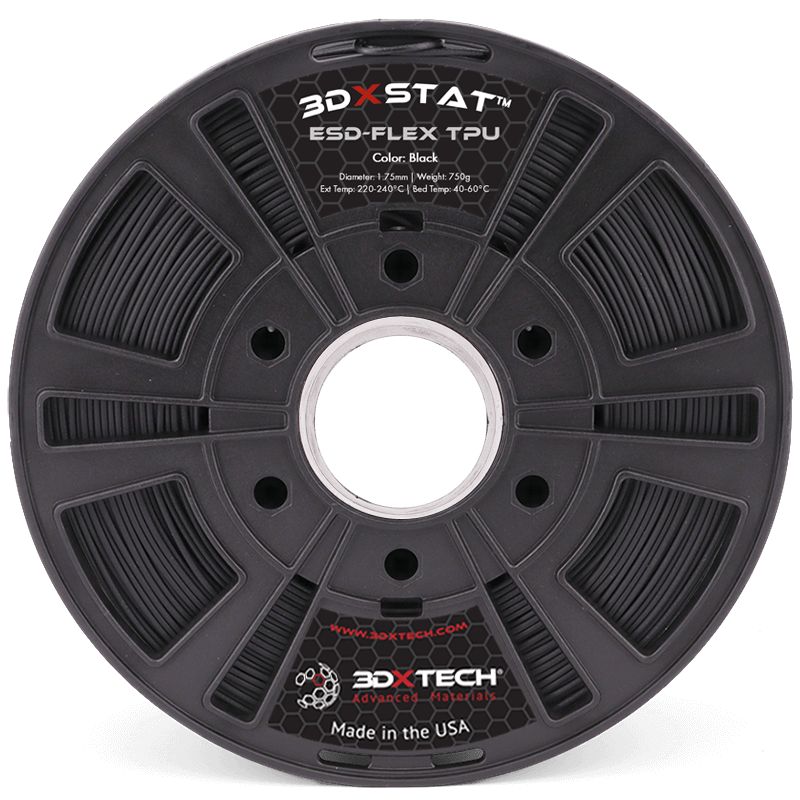3DXSTAT ESD-FLEX TPU
3DXSTAT ESD-Flex TPU [90A] [thermoplastic polyurethane] elastomer is an engineering-grade thermoplastic chosen for its balance of excellent flexibility, ease of printing, chemical resistance, and toughness. 3DXSTAT ESD Flex elastomeric filament has been formulated to offer ESD-Safe electrical conductivity with a target surface resistance of 10²-10³ Ohm.
MADE IN THE USA
We manufacture all of our filaments in our 68,000 ft² manufacturing facility (located in Grand Rapids, Michigan) using state-of-the-art equipment and processes. Our goal continues to be to make the most innovative filaments on the market – targeting difficult end-use applications.

Print Recommendations

Extruder Temp
220-240°C

Bed Temp
40-60°C

Heated Chamber
Not required

Nozzle Specs
No special concerns

Layer Height
No special concerns

Drying Specs
65°C for 4 hours
RECOMMENDED
You May Also Like
Make confident choices and discover the best printing solutions.


